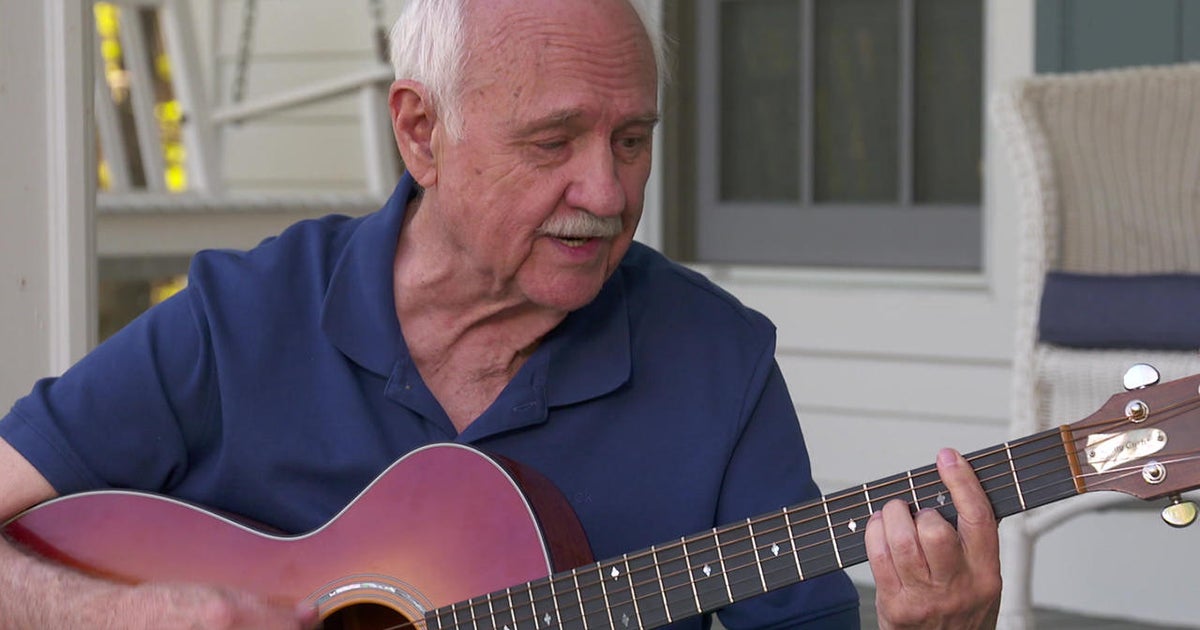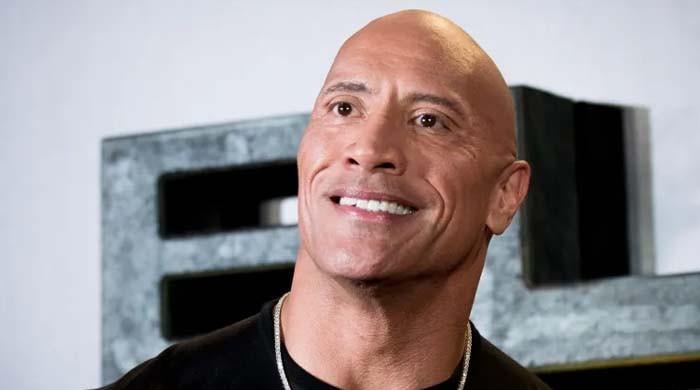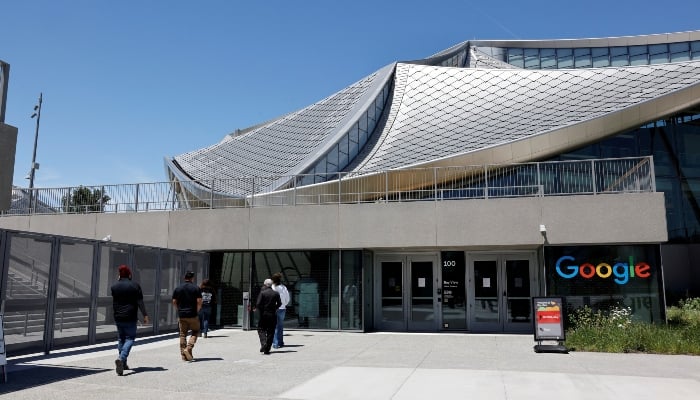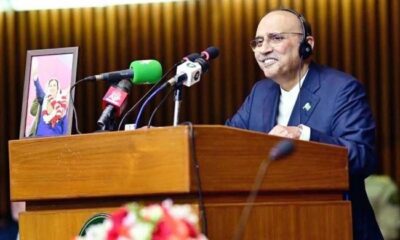Entertainment
Sonny Curtis on a career spanning Buddy Holly and Mary Tyler Moore

The theme song to “The Mary Tyler Moore Show” is familiar to generations of TV watchers. The name of the man who wrote and sang it, less so.
Who can turn the world on with her smile?
Who can take a nothing day, and suddenly make it all seem worthwhile?
Well, it’s you, girl, and you should know it
With each glance and every little movement you show it
Love is all around, no need to waste it
You can have the town, why don’t you take it
You’re gonna make it after all
But by the time Sonny Curtis recorded “Love Is All Around” in 1970, he’d “made it” several times over himself, as a songwriter, as a recording artist, and as an early bandmate of the legendary Buddy Holly.
Born in 1937 in rural West Texas, Curtis grew up picking cotton on his father’s farm. “Oh, it was a miserable job,” he told correspondent Mo Rocca. “The heavier the cotton sack gets, the worse it is, man.”
CBS News
His love of music came from family. His aunt taught him to play the guitar, and while working those fields, Curtis dreamed up his own songs: “Driving a tractor, you go down half a mile that way, and when you get there, you turn around and come back a half mile this way. You have plenty of time to write a song!”
Curtis was just 14 when he met a young Buddy Holly in nearby Lubbock. “Buddy had black hair, but he had dyed it blonde, and it was growing out. And he reminded me of a black-and-tan coon hound. We sorta skipped all the niceties and got our guitars and started playing.”
Rocca asked, “How quickly did you realize this guy’s serious about music?”
“Buddy, he exuded confidence. He just knew he was gonna make it big one day.”
The two became fast friends, bonded by their love of music. Sometimes, Curtis said, he’d spend the night at Buddy’s. The two would wake up at midnight and flip on the car radio for a show out of Shreveport, Louisiana, to hear some of the rhythm and blues voices that would shape rock ‘n’ roll: “We heard, oh, Big Mama Thornton and Lonnie Johnson, and Lead Belly, Little Richard, Ray Charles, you name it.”
“Were you just absorbing this?” asked Rocca.
“Oh, boy, were we ever, yeah!”
Buddy and Sonny had formed a band and were still figuring out their own sound, when a then little-known Elvis Presley came to town. “And I mean, the girls were goin’ nuts, man. And that really got our attention. All a sudden, we thought, this not only involves music, this involves pretty girls!”
When Elvis came back to town in 1956, Buddy and Sonny’s band was the opening act. “Well, I guess we were right there sort of at the beginning of rock ‘n’ roll.”
“What was Elvis like backstage?” asked Rocca.
“He was just an old boy.”
The band went on to record some demos, but wasn’t making much money.
So, Curtis left to tour with country star Slim Whitman. “He treated me kind of like a little brother,” Curtis said. “I remember I’d be on the stage and he’d come over and say, ‘Now don’t be nervous.'”
Meanwhile, Buddy Holly formed a new band, which would prove to be seminal. The Crickets shot to fame, appearing on “The Ed Sullivan Show.”
Rocca asked, “When that was happening, did you feel a little left out, like, ‘Ugh’?”
“I did feel kind of like the train left the station and I wasn’t on it, you know?” Curtis replied.
But on February 3, 1959, Curtis’ friend and former bandmate died in a plane crash near Clear Lake Iowa.
Curtis served as a pallbearer.
“Buddy Holly was 22 when he died,” Rocca said.
“Yes. Can you imagine the amount of music he pumped into the system in a short period of, like, 18 months? No telling how much he would’ve contributed had he been around.”
By that time, Curtis had joined the Crickets. But with Holly gone, the band felt rudderless.
It was Curtis’ talent for songwriting that helped put the wind back in his sails. His song “Walk Right Back” became a big hit for the Everly Brothers:
And then there’s this classic, which Curtis claims he wrote in about 20 minutes: “I Fought the Law”:
“I Fought the Law” has been covered by artists from The Bobby Fuller Four to The Clash.
Sonny Curtis is 84 now. He and Louise, his wife of more than 50 years, live outside Nashville, where they raised their daughter, Sarah. He is enshrined in Nashville’s Musicians Hall of Fame – as is his old guitar.
In 2012, the year the Crickets retired, they were inducted into the Rock ‘n’ Roll Hall of Fame.
But it’s a song Curtis wrote for the small screen that may be his most enduring legacy.
In 1970, he was living in Los Angeles when he got a call from a friend about a new sitcom being produced for Mary Tyler Moore: “It was just this young girl gets jilted in this small community, and she moves to the big city of Minneapolis, gets a job at a news station. And that was about it.”
Curtis wrote the theme song based on a four-page description of the show. “I honed in on the part that she rented an apartment she had a hard time affording, and wrote, ‘How will you make it on your own?’ … ‘This world is awfully big, and girl, this time you’re all alone.'”
Within just a few hours, Curtis was summoned to the studio to play his song for producer James L. Brooks. Curtis recalled, “I got my guitar out and I sang it to him. He smiled and said, ‘Sing that again.’ And I had to sing it about ten times. And before I left that afternoon, the room was full of people standing all around the walls. I thought, ‘I believe I got a shot at this!'”
WEB EXTRA: Sonny Curtis on writing the “Mary Tyler Moore Show” theme song
Rocca said, “It wasn’t a given that you’d write and sing it.”
“No. As a matter of fact they didn’t want me to sing it. I said, ‘I wanna sing this,’ you know? And I was probably more pushy than I should have been, if I’da known better. But fortunately, I didn’t know better at the time!”
When the show became a hit, Curtis was asked to rework his song: “When they started to do the second season, he said, ‘Sonny, she’s obviously made it. And we have to have some new lyrics.'”
For a man whose career dates back to the birth of rock ‘n’ roll, Sonny Curtis remains disarmingly humble. “Oh, I’ve always sort of had a rule, don’t give advice in a crowd,” he laughed.
But when pressed, he will share some wisdom: “If they say, ‘Man, you oughta go back to Texas ’cause you’ll never make it,’ just look at them and say, ‘No, you’re wrong, because I am gonna make it.'”
Rocca replied, “You know, I should write this down, ’cause this sounds like a song right here!”
For more info:
Story produced by Michelle Kessel. Editor: Lauren Barnello. Illustrations: Mitch Butler.
Entertainment
Jay Leno reveals how he, wife Mavis have ‘fun’ despite her dementia

Jay Leno “enjoys” taking care of his wife Mavis as she battles advanced dementia.
The former late-night talk show host says the couple have “fun with” dealing with her degenerative condition – which causes a decline in thinking, memory, and reasoning skills – which she was diagnosed with in 2024.
Jay – who married Mavis in 1980, told PEOPLE magazine, “I’ve been very lucky in my life. My wife is fighting dementia and all that, but it’s not cancer. It’s not a tumour, so I enjoy taking care of her.”
He continued, “It’s not work, because people come up, and say they feel so sorry. I understand the sympathy, because I know a lot of people are going through it, but it’s OK.
“I like taking care of her. I enjoy her company, and we have a good time. We have fun with it, and it is what it is,” the NBC comedian added.
However, the 75-year-old TV star said there are times that will be difficult, but Jay is fortunate to be in a position where he can afford to look after Mavis and her medical bills.
Jay – who is worth a reported $450 million, said in conclusion, “There are going to be a couple of years that are tricky. So, the first 46, really great. But it’s OK. It’s not terrible. I’m not a woe-is-me person. I’m just lucky that I am able to take care of her.”
Entertainment
Dwayne Johnson reveals how his career ‘completely changed’

Dwayne Johnson has reached a “turning point” in his acting career.
The wrestler-turned-movie star plays real life MMA fighter Mark Kerr in sports drama The Smashing Machine and he’s admitted the job “completely changed” his life.
During an appearance on The Hollywood Reporter’s Awards Chatter podcast, he explained: “Smashing Machine completely changed my life in ways that I didn’t anticipate, because of what it represents.”
The Jumanji star continued, “It represents, for me, listening to your gut, to your instinct, to that little voice. Sometimes in life, you think you’re capable of something, but you don’t quite know. And sometimes it takes people around you to go: ‘Come on, you could do this.’”
“Smashing Machine also represents a turning point in my career that I’ve wanted for a long time: for the first time in my career —-20 plus years since The Scorpion King came out – I made a film to challenge myself and to really rip myself open and to go elsewhere and disappear and transform,” he added.
“And not one time did I think about box office,” Dwayne claimed, adding, “Even though we didn’t do well [at the box office], or as well as we wanted to, it was okay because it just represented the thing I did for me.”
“Maybe it was because I was an only child, but all the stuff that I had experienced as a kid and as a teenager – eviction, my mom tried to take her life two months after we got evicted and I pulled her out of the middle of the highway, a whole bunch of stuff happened – I had rejected exploring any of that on film,” the Moana star explained.
“For years I would do these other films that were big and fun, Jumanji and Moana, with a happy ending, and I love that still,” he said.
But then he compared The Smashing Machine and added. “But what this represented was: ‘Oh wait, I can do the thing I love, which is to tell stories, but I could also take all this stuff and have a place to put it’.”
“Anyway, Smashing Machine, as you see, was an opportunity of a lifetime that did change my life,” Dwayne Johnson concluded.
Entertainment
The AI revolution has a power problem

SAN FRANCISCO: In the race for AI dominance, American tech giants have the money and the chips, but their ambitions have hit a new obstacle: electric power.
“The biggest issue we are now having is not a compute glut, but it’s the power and…the ability to get the builds done fast enough close to power,” Microsoft CEO Satya Nadella acknowledged on a recent podcast with OpenAI chief Sam Altman.
“So if you can’t do that, you may actually have a bunch of chips sitting in inventory that I can’t plug in,” Nadella added.
Echoing the 1990s dotcom frenzy to build internet infrastructure, today’s tech giants are spending unprecedented sums to construct the silicon backbone of the revolution in artificial intelligence.
Google, Microsoft, AWS (Amazon), and Meta (Facebook) are drawing on their massive cash reserves to spend roughly $400 billion in 2025 and even more in 2026 — backed for now by enthusiastic investors.
All this cash has helped alleviate one initial bottleneck: acquiring the millions of chips needed for the computing power race, and the tech giants are accelerating their in-house processor production as they seek to chase global leader Nvidia.
These will go into the racks that fill the massive data centres — which also consume enormous amounts of water for cooling.
Building the massive information warehouses takes an average of two years in the United States; bringing new high-voltage power lines into service takes five to 10 years.
Energy wall
The “hyperscalers,” as major tech companies are called in Silicon Valley, saw the energy wall coming.

A year ago, Virginia’s main utility provider, Dominion Energy, already had a data-centre order book of 40 gigawatts — equivalent to the output of 40 nuclear reactors.
The capacity it must deploy in Virginia, the world’s largest cloud computing hub, has since risen to 47 gigawatts, the company announced recently.
Already blamed for inflating household electricity bills, data centres in the United States could account for 7% to 12% of national consumption by 2030, up from 4% today, according to various studies.
But some experts say the projections could be overblown.
“Both the utilities and the tech companies have an incentive to embrace the rapid growth forecast for electricity use,” Jonathan Koomey, a renowned expert from UC Berkeley, warned in September.
As with the late 1990s internet bubble, “many data centres that are talked about and proposed and in some cases even announced will never get built.”
Emergency coal
If the projected growth does materialise, it could create a 45-gigawatt shortage by 2028 — equivalent to the consumption of 33 million American households, according to Morgan Stanley.

Several US utilities have already delayed the closure of coal plants, despite coal being the most climate-polluting energy source.
And natural gas, which powers 40% of data centres worldwide, according to the International Energy Agency, is experiencing renewed favour because it can be deployed quickly.
In the US state of Georgia, where data centres are multiplying, one utility has requested authorisation to install 10 gigawatts of gas-powered generators.
Some providers, as well as Elon Musk’s startup xAI, have rushed to purchase used turbines from abroad to build capability quickly. Even recycling aircraft turbines, an old niche solution, is gaining traction.
“The real existential threat right now is not a degree of climate change. It’s the fact that we could lose the AI arms race if we don’t have enough power,” Interior Secretary Doug Burgum argued in October.
Nuclear, solar, and space?
Tech giants are quietly downplaying their climate commitments. Google, for example, promised net-zero carbon emissions by 2030 but removed that pledge from its website in June.

Instead, companies are promoting long-term projects.
Amazon is championing a nuclear revival through Small Modular Reactors (SMRs), an as-yet experimental technology that would be easier to build than conventional reactors.
Google plans to restart a reactor in Iowa in 2029. And the Trump administration announced in late October an $80 billion investment to begin construction on ten conventional reactors by 2030.
Hyperscalers are also investing heavily in solar power and battery storage, particularly in California and Texas.
The Texas grid operator plans to add approximately 100 gigawatts of capacity by 2030 from these technologies alone.
Finally, both Elon Musk, through his Starlink program, and Google have proposed putting chips in orbit in space, powered by solar energy. Google plans to conduct tests in 2027.
-

 Business1 week ago
Business1 week agoAndy Jassy Reveals Real Reason Behind Amazon 14,000 Job Cuts — And It’s Not AI
-

 Sports1 week ago
Sports1 week agoTudor’s Juve exit means McKennie must prove himself all over again
-

 Politics1 week ago
Politics1 week agoPolitical violence kills almost 300 since Hasina’s fall: rights group
-

 Sports1 week ago
Sports1 week agoPakistani runners make their mark at Istanbul Marathon
-

 Politics1 week ago
Politics1 week agoIran vows to rebuild nuclear sites ‘stronger than before’
-

 Tech1 week ago
Tech1 week agoStep Away From Screens With the Best Family Board Games
-

 Entertainment1 week ago
Entertainment1 week agoPresident Zardari to attend Second World Summit for Social Development in Doha
-

 Tech1 week ago
Tech1 week agoLive TV Isn’t Dead. These Are the Best Live TV Streaming Services





